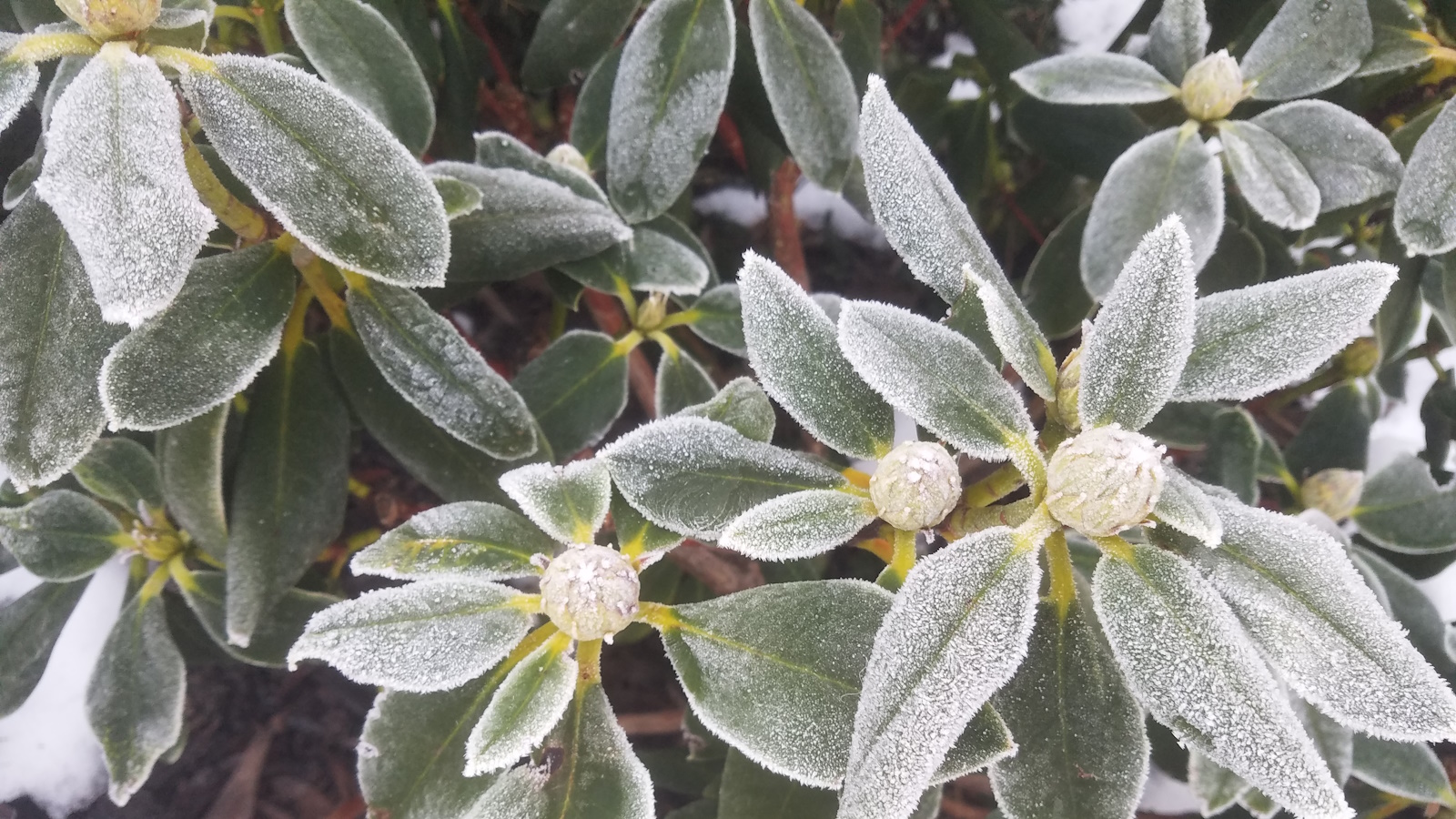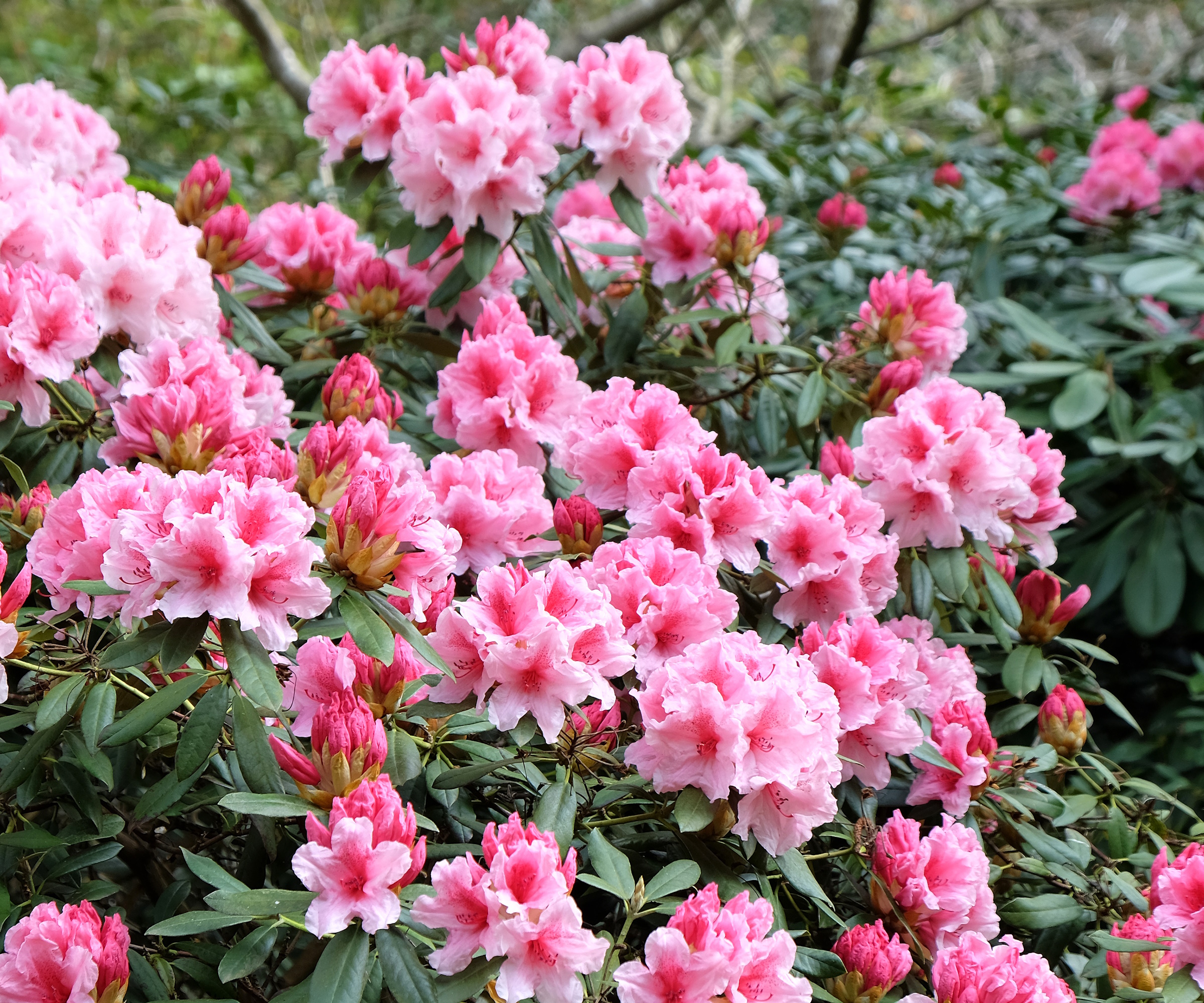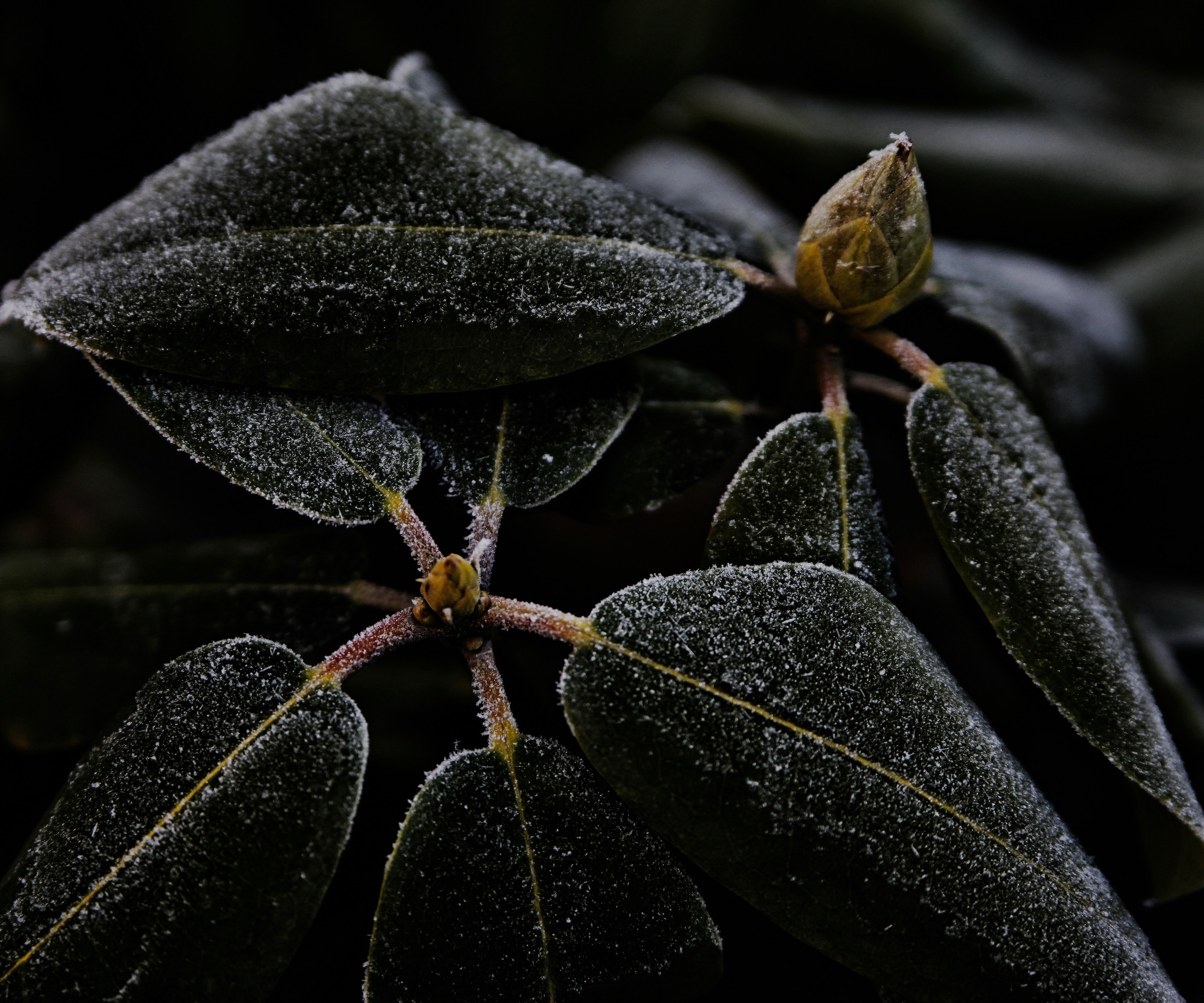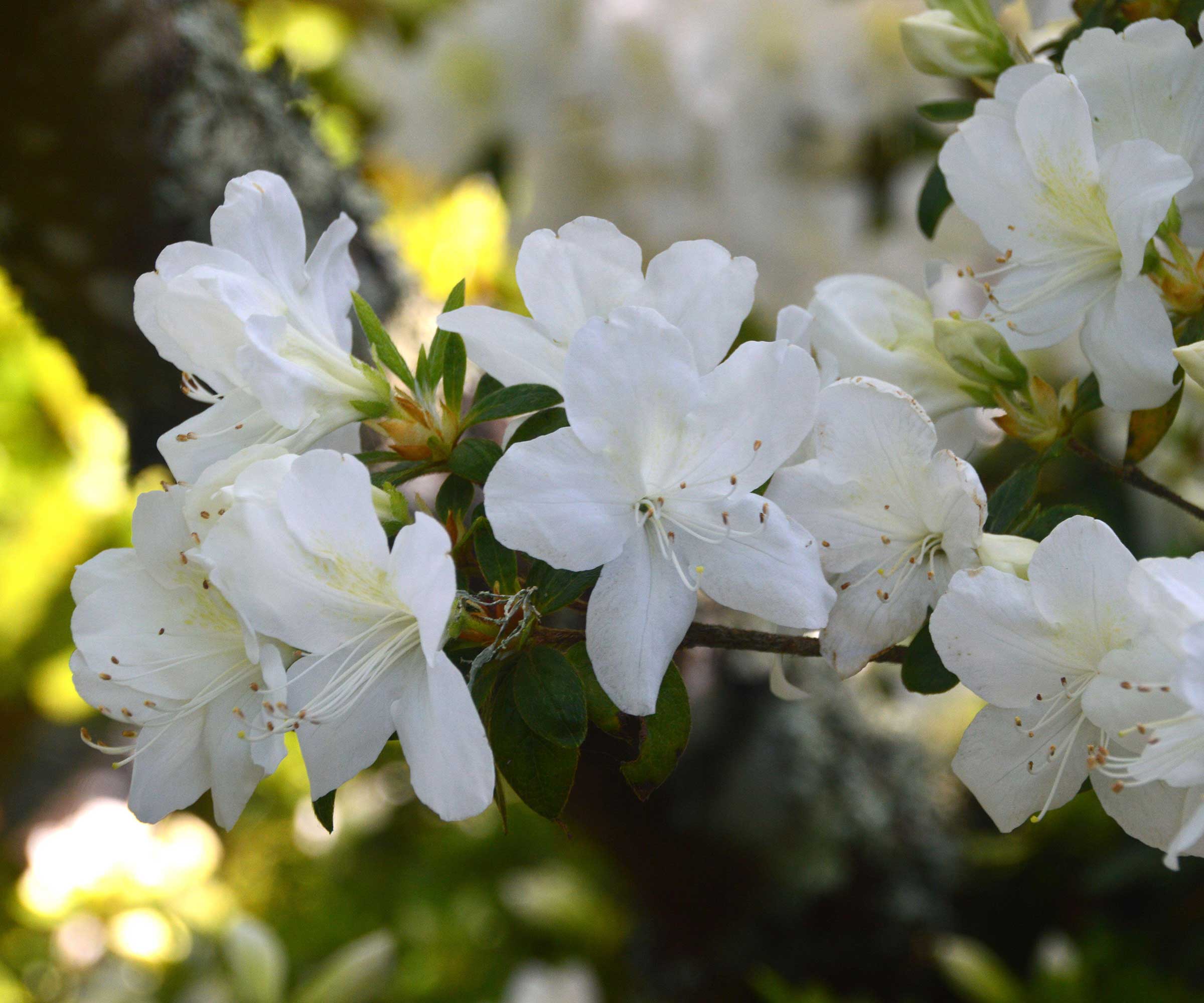
Rhododendrons are real showstoppers in the yard. When in bloom, the large bushes are covered in colorful, ball-like clusters of bell-shaped flowers. Most varieties are evergreens, and will retain their glossy, dark green leaves through bitter winters.
It is these leaves that have earned them the nickname of nature’s thermometers. The leaves are thermotropic – the colder it gets, the more they protectively curl and roll up, unfurling once the weather warms up again. Their reaction to changes in weather are an accurate gauge of just how low the temperature has dropped.
Learning how to grow rhododendrons is uncomplicated, as these plants are hardy enough to withstand frigid air and still bring a welcome splash of color to the winter yard. Our gardening experts advise what precautions can be taken to ensure they continue to brighten beds and borders for decades.
Rhododendrons: from the foot of the mountains to suburban yards
This woody plant is a garden favorite that has travelled far from its roots growing wild across China, Asia and in the Himalayas. It likes partial or dappled shade, as prolonged exposure to hot sun will dry it out while too dark a spot will stunt its growth.
Rhododendrons range in size from dwarf varieties which spread low across the ground, to the tallest specimens that can grow up to six meters tall. They make a beautiful natural border if you want a hedge that flowers, but can also be a spectacular centerpiece in beds when they bloom – which can be any time between early spring and late summer.
1. Preparing rhododendron plants for winter

‘My efforts begin in late fall, just before the ground freezes, to lock in moisture around the plant,’ says Marco Picano, co-owner of Picano Landscaping in Massachusetts. ‘I've dealt with the challenges of winterizing plants, including rhododendrons, in a region with harsh winters, and timing is crucial.'
Pruning rhododendrons is usually done after it has finished flowering so isn’t a priority for winter, however, Marco recommends ‘removing any damaged or diseased branches to improve plant health before the freeze sets in.’
By cutting back any long, leggy branches, you can better protect your plant against heavy snowfall and high winds.
2. Layer up with mulch to lock in moisture

Most plants appreciate some extra coverage over the base and roots in the colder weather, even when they are dormant or, in the case of evergreens, have slowed down their growth.
Laying down mulch is just one of the ways to prepare your garden for winter, and will benefit the leafy rhododendron just as much as it helps plants that have been reduced to brown, brittle stems.
‘I focus on protecting the root zone from frost using a layer of organic mulch, like pine needles, such as this natural pine needles mulch from Target, or bark, like this biodegradable natural wood mulch from Amazon, which provides insulation against temperature fluctuations,’ says Marco.
‘I'll also use burlap wraps in areas prone to frost to protect the foliage from ice and snow damage as well as windbreaks.’ Insulate trunks with this Pyramidti windproof tree protection wrap from Walmart that still allows air and water to flow while keeping bushes and trees warm.
3. Note any regional variations

The amount of protection a rhododendron will need over winter will vary depending on which of the US hardiness zones your home and yard fall under. Rhododendrons tend to grow best in zones 5 to 8, where they don’t experience extremes of heat or cold, although a certain amount of chilling will strengthen the flower buds.
‘For rhododendrons growing in moderate climates, applying a 2-3 inch deep layer of mulch around the base helps protect the roots from temperature fluctuations and keep in moisture,’ says Joe Dogherty, owner of D&G Landscaping.
‘In zones prone to more severe cold, I recommend gently tying the branches with twine to prevent snow and ice damage. Along with trimming any weak or dead wood before winter, this has proven effective in minimizing damage and encouraging robust spring growth.'
If you live somewhere that does experience freezing temperatures, you'll want to consider your variety. The P.J.M. hybrid is especially winter hardy and can survive extended freezes.
This P.J.M. rhododendron from Nature Hills will be covered in pink and lavender colored flowers in early spring and has foliage that turns from green to shades of purple and russet heading into winter.
4. Keep plants moist
Drooping brown leaves are often an indication that rhododendrons are suffering from winter burn. They have become dehydrated through a combination of cold, dry winds blowing water off the leaves and the roots being unable to replace it from the frozen ground.
Adding a thick mulch layer will slow water evaporation from the soil and help plants to stay hydrated. Trim brown and withered leaves off if they don’t fall away first.
‘In more temperate regions, where winters are milder, advanced irrigation systems can maintain consistent soil moisture levels, preventing stress during drier periods,’ says Joe Dogherty. 'Adjusting the irrigation schedule from bi-weekly to monthly during winter can keep rhododendrons healthy without overwatering.’
In early spring, it is time to prune off any dead or damaged branches to encourage new growth. Check them first by scraping away the top layer of bark. If it is brittle and brown underneath, cut it away. If it reveals green and healthy tissue, let it stay.
When the buds start swelling, treat with a balanced fertilizer designed for acid-loving plants. This azalea, camellia & rhododendron plant food from Amazon has everything needed to encourage a spectacular display.
Evergreens are the heroes of the winter garden, providing color and life in a gray, leafless landscape. They are mostly easy to care for, but can grow big and bushy if you don't keep them under control. Follow our guide on the best time to trim evergreens to keep them in shape without risking any damage to your plants.







